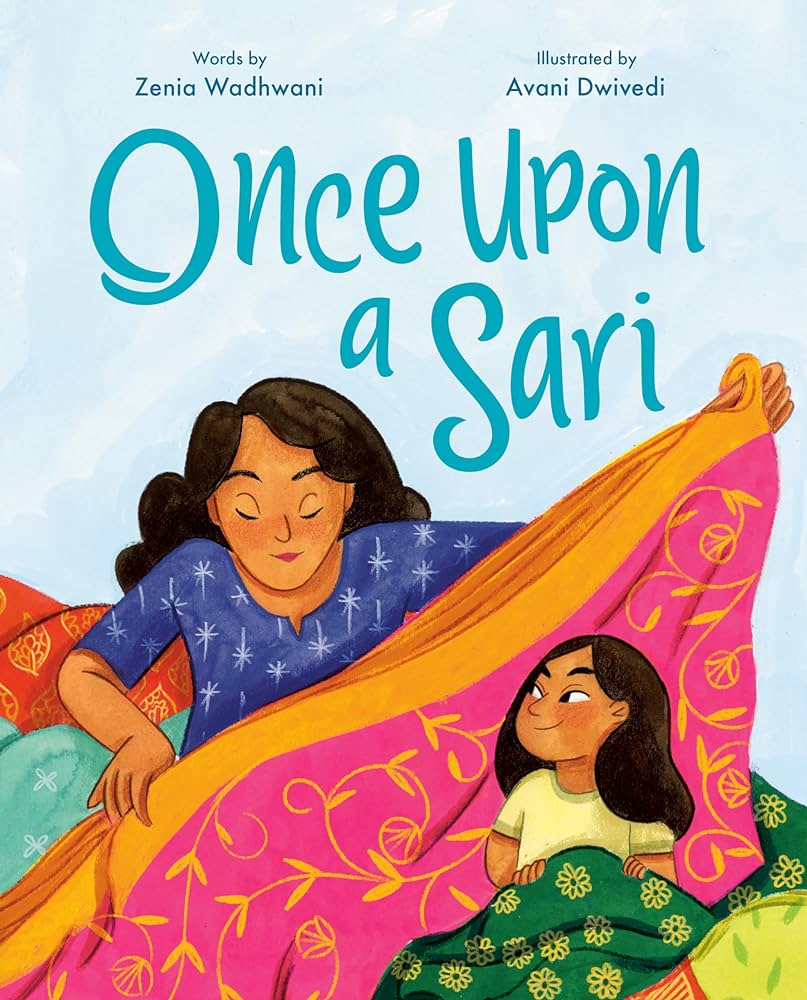
Review by Ibha Gupta
Tundra Books, 2024
25 pages, paperback, $24.99 CAD, 9781774880944
Picture Book, Ages 4 – 8
Fiction
“…so that I would remember my family’s history and always find ways to create joy.”
When I began reading Once Upon a Sari, I was sceptical not only because of the many titles that already exist on saris, but also because of how, in a market racing to publish BIPOC stories, authenticity is often expendable. However, as I turned page after page, I couldn’t help but smile wide. Wadhwani and Dwivedi together have created a colourful, touching, and—most importantly—meaningful story that has more to offer than token representations of Indian culture.
The book begins with little Avani getting caught by her mother as she rummages through her wardrobe, pulling out various saris. As Avani sits in a pile of fabric, her mother begins to tell her stories of each sari and the significance they hold. As she describes the weave and origin of every sari, she also tells Avani of when she wore those saris, where they come from, and how they are an inherent part of her personal history.
Reading the interactions between Avani and her mom and the descriptions of the saris the mother narrates instantly took me back to my own childhood. It truly was one of the most special moments in an Indian kid’s life when their mother let them peek into the sacred sari cupboard! The awe at the intricate handiwork, the feel of soft, lush fabric, the thrill of being allowed to touch this symbol of adulthood is all captured so lovingly in this book. It’s no surprise my own mother has three saris identical to the ones described, revealing that Wadhwani and Dwivedi are truly authentic and sincere in writing this story. However, not only do they capture the status of a sari in Indian culture, but they also dwell on universal themes of finding connections with our ancestors, the power of intergenerational bonds, and how resilience, knowledge, and traditions are passed down through families. Alluding to India’s traumatic history of the 1947 Partition, the story takes on a deeper meaning, portraying the struggles, survival, and ultimately the strength of refugees.
The language is poetic, rich in sensory details, imagery, and simile. I appreciated how Wadhwani inserts pronunciations for some of the cultural terms without making it jarring, creating a more accessible story for new readers. Dwivedi creates lively and playful full-page illustrations that encircle the text, depicting the vibrancy and fluidity of a beautiful sari.
Overall, Once Upon a Sari does what an excellent picture book ought to: combining nuance and simplicity into a satisfying reading experience for children and a nostalgic one for adults. I highly recommend this book not only as an exceptional example of diversity and representation in children’s literature, but also for those who are looking for stories that evoke affection, bonding, and a positive model for female relationships.
Ibha has a Masters in English and is now completing her second Masters in Children’s Literature at UBC. Her research interests are issues of representation and diversity in Fantasy Fiction. She misses the sunny beaches of Goa, India which she grew up on but has come to the conclusion that she absolutely loves autumn in Vancouver, her new home. Spicy foods, drinking chai and buying different editions of her favourite books make her the happiest.